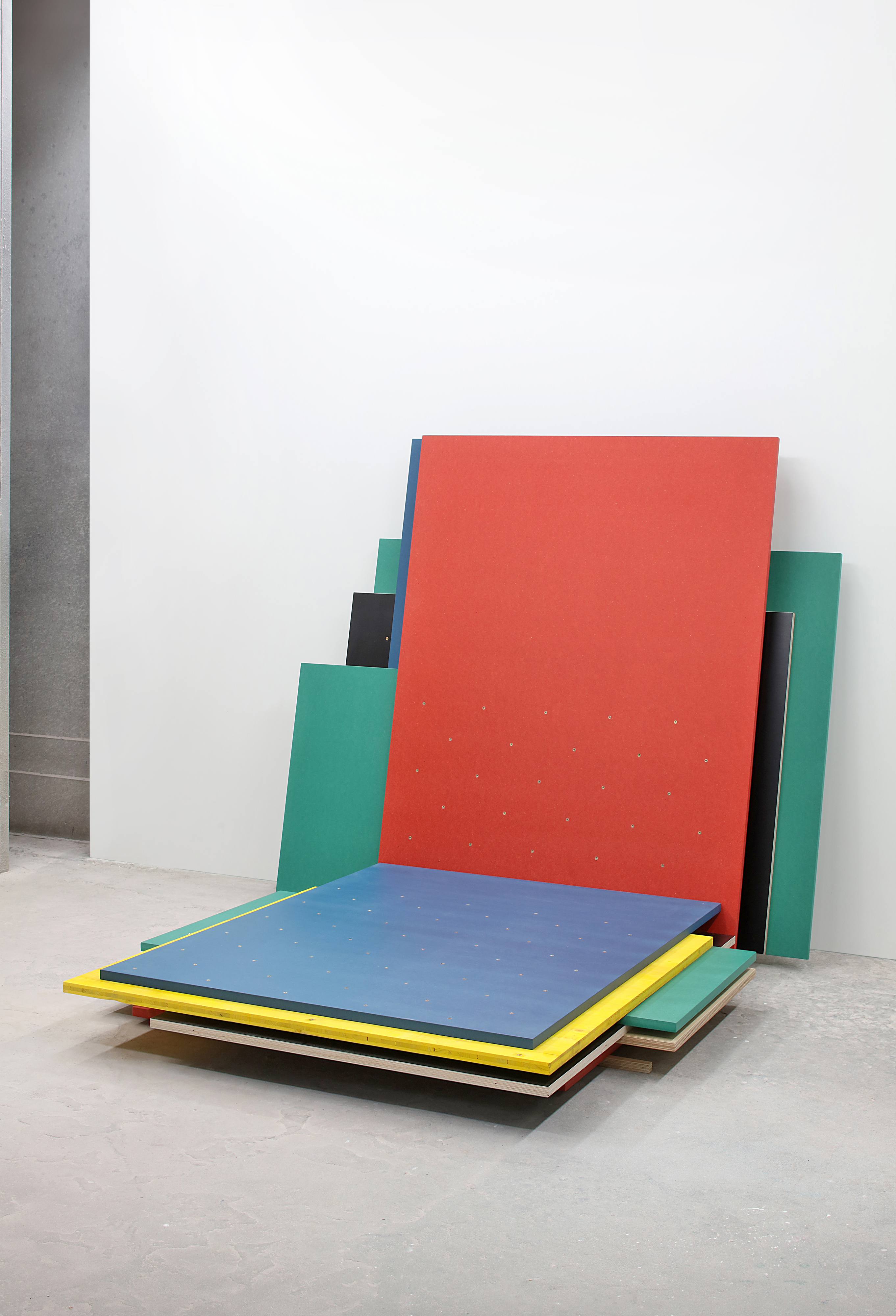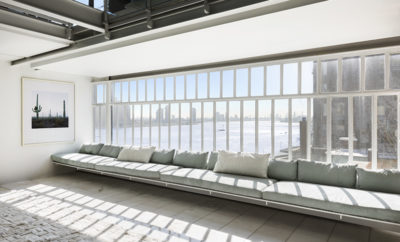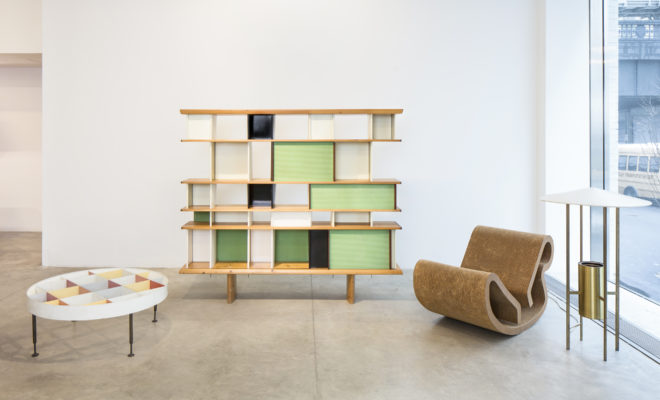 Courtesy of Friedman Benda Gallery.
Courtesy of Friedman Benda Gallery.
Exhibition
Two Friedman Benda Exhibits Consider Architect-Designed Furniture
“Unencumbered by the market or mass-production, architects bring fresh insight to furniture design,” Mark McDonald says. This winter, the leading mid-century modern dealer took over New York’s Friedman Benda Gallery to present Inside the Walls, which just ended its run. The extensive yet select survey revealed how twentieth-century architects forayed into furniture design; often to support their visionary building projects. As a sharp yet appropriate contrast, Juan Garcia Mosqueda—former Chamber Gallery founder and director—mounted the concurrent No-Thing exhibition in the gallery’s project space (on view until April 14th). Exploring the theoretical yet deeply relevant issue of aporetics, the young curator commissioned nine contemporary architecture firms to create conceptual, limited-edition furniture pieces that reflect a shared mistrust of how cultural and commercial rules have unconsciously steered our domestic habits and the way in which we are supposed to engage the objects around us.
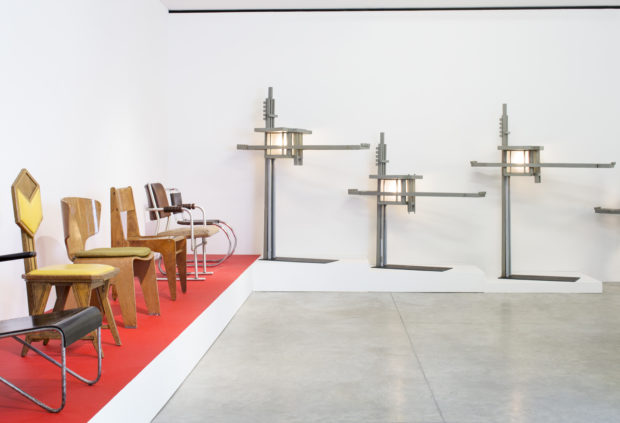
Inside the Walls exhibition. Courtesy of Friedman Benda.
As something of a design historian’s treasure trove, Inside the Walls displayed recognizable works like Frank Gehry’s Easy Edges rocking chaise lounge (1973) and the Eames’ ESU cabinet (1953). Yet a large portion of the works on view were relatively unknown to even the savviest aficionados. “There were several unusual pieces by known architects including Gio Ponti’s Coffee table (1955), which had only really been seen in photos before,” McDonald cites. “It’s rare to find freestanding furniture by Louis Kahn but we were able to locate a desk he designed for one of his house projects, developed in 1945. Some architects represented in the exhibition such as Warren Platner are now better remembered for their furniture designs than architectural projects.” Placed in an impressive sequence, Wright’s Little House lights (1913–1917) revealed similar architectonic qualities evident in both Rudolph Schindler’s cantilevered Partner’s desk (1945) and Gerrit Rietveld’s Cubist–inspired Beugel armchair (1927). The exhibition puts emphasis on the lasting impact that these three innovators have had on global design.
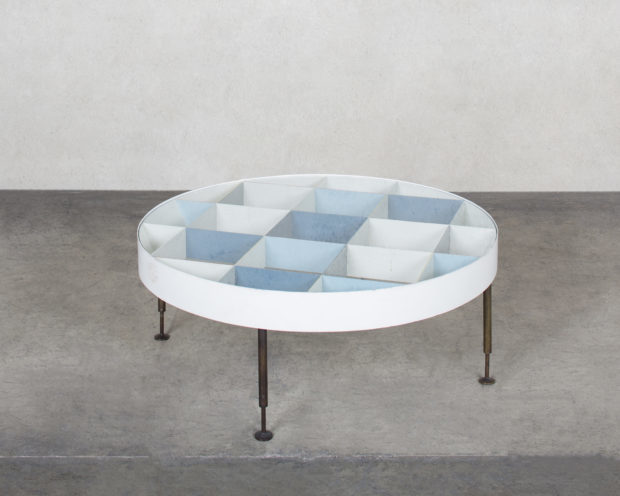
Coffee table by Gio Ponti, c. 1955 Enameled steel, brass, glass. Photograph by Dan Kukla; courtesy of Friedman Benda.
“An architect can employ new forms, techniques, and materials to establish a groundbreaking direction in furniture design.” McDonald reflects. “My goal was to locate good examples that illustrate a newness, a departure from historical norms. Thus, Inside the Walls was not a survey of all possible architects—simply a curated selection of rare pieces.” In this way, McDonald demonstrates that furniture has as much importance as architecture in echoing the revolutionary developments, changing styles, and shifting zeitgeists of history.
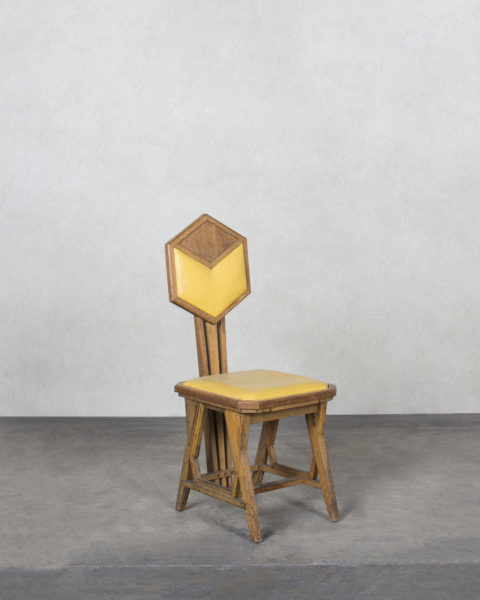
‘Peacock’ chair designed by Frank Lloyd Wright for the Imperial Hotel, Tokyo, 1921. Oak, vinyl, brass. Photograph by Dan Kukla; courtesy of Friedman Benda.
Mosqueda sees a difference between the furniture designed by architects covered in Inside the Walls and that of contemporary practitioners, such as those he commissioned for the No-Thing showcase: Andy and Dave, Ania Jaworska, architecten de vylder vinck taillieu, Leong Leong, MILLIØNS, MOS, Norman Kelley, SO – IL, and Pezo von Ellrichshausen. “They are less dogmatic or no longer in search of an ultimate truth but equally radical and concerned with the technology of our time,” he describes. “The architects in the [No-Thing] show are all still working within a consumerist, highly capitalist context, but devote most of their time to speculative and experimental work that is skeptical of the systems in place.”

Installation of No-Thing. Photograph by Dan Kukla; courtesy of Friedman Benda.
Inspiring people to adapt furniture to their specific needs and routines rather than follow increasingly homogeneous standards, the works on view subvert the archetypical nature of tables, seats, storage units, and wash basins. For example, Belgian practice architecten de vylder vinck taillieu’s Kamer Frank armchair is comprised of propped up wooden planks. On first glance, it appears to be a pile of construction materials. Unlike the universal principles of form and function apparent in Marcel Breuer’s B5 Club Chair (1926)—shown as part of the Inside the Walls exhibit—this piece is open to active interpretation and customization. Rather than dictate control through style or a set of ideals, today’s architects—engaged in furniture design—are perhaps more concerned with providing users with the parameters to forge their own experiences and surroundings.


